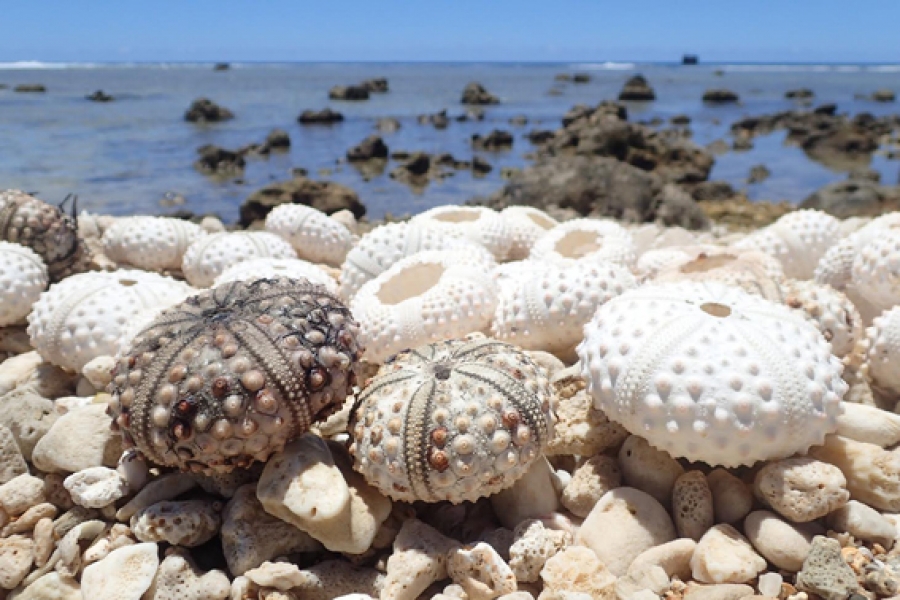Avake assist with MMR lagoon health project
Wednesday 1 September 2021 | Written by Melina Etches | Published in Environment, National

The shells of dead sea urchins washed up on the shore near Avarua. The rapid decline in sea urchins can cause an algal bloom in the future, says Rarotonga-based marine biologist Teina Rongo. PHOTO: Annabelle Phillips/16101601
Concerns had been raised from residents in Muri regarding cages holding sea urchins locally known as “avake” (Tripneustes gratilla) in Muri lagoon.
Ministry of Marine Resources (MMR)senior fisheries officer Kirby Morejohn confirmed the cages are theirs, components of one of their research projects - “investigating species that may assist in lagoon health maintenance; these species include (amongst others) sea cucumbers, urchins and giant clams which all contribute to nutrient and algae reduction.”
MMR deployed cages in the Muri lagoon and stocked them with avake (or left them empty as controls), “to determine herbivory effectiveness on the algae,” said Morejohn.
Herbivory effectiveness means, we wanted to see if avake ate the two main algae species common in Muri lagoon and to what degree, he said; the herbivory study will conclude this week. The preliminary results were of no surprise, “in areas with urchins, algae levels decreased,” said Morejohn, as MMR performs aerial and in-water algal surveys every two months and water quality monitoring monthly.
A Muri resident says, “if they (MMR) think the avake will eat the algae I think they will be very disappointed.”
Morejohn responded, “the purpose of this work was to test if algal levels declined in an area with avake – so we’re not really “thinking that the avake will eat the algae” we’re testing to see if they do – this is the beauty of science – there is no need to predict the result, our experiment will give us the answer.”
Based on studies from Hawaii and the Philippines, avake are effective in reducing levels of invasive algal species, as well as aiding in reef recovery after bleaching events by reducing macroalgal growth, he added.




































